
America’s 50 states (and the District of Columbia) attract very different personalities when it comes to the world of work. Actors flock to New York and southern California, tech workers head to Silicon Valley and Seattle, oil jobs are more plentiful in Texas and loggers love Oregon.
But Oxfam America, which is part of a global organization working to end the injustice of poverty, decided to dig into the elements that all jobs share. Their analysis examined labor laws and worker protections in all states and D.C.
“The rankings are intriguing, and sometimes surprising,” the organization writes. While federal laws help determine working conditions and pay for all Americans, state laws matter as well.
“If you live in one of the best states for workers, your wages and conditions are significantly better than in one of the worst states,” the report concludes. “What’s more, your well-being is likely much better as well.”
Here’s a look at the overall rankings of the states and D.C., taking into account each area’s wage policies, worker-protection policies and right-to-organize policies, from worst to best.
51. Virginia

Overall score: 1.85
There’s a big difference in just a few miles. With a minimum wage of $7.25, Virginians who work a full-time minimum-wage job earn $15,080. But a higher minimum wage of $13.25 just over the D.C. border means their neighbors earn $27,560 annually.
50. Mississippi

Overall score: 7.25
The six states ranking lowest on the list are all in the southern United States and include Mississippi, which is also the state with the highest poverty rate, at 21.1 percent. The minimum wage here is the federal minimum of $7.25.
49. Alabama

Overall score: 7.97
Alabama barely beats out its neighbor Mississippi in the race to the bottom of this index. Oxfam reports a moderate correlation between the results of the index and each state’s infant mortality rate. Sadly, Alabama is on the wrong end of that list, too, with the highest rate of infant deaths in the nation, 537 in 2016.
48. Georgia

Overall score: 9.31
While the federal minimum wage is $7.25 per hour, Georgia and Wyoming actually have lower minimum wages, set by state law at $5.15. Most workers make the federal minimum, but as Politifact points out, the law allows certain farm workers, seasonal workers, health aides and workers who receive tips to be paid less.
47. North Carolina

Overall score: 12.45
North Carolina, along with South Carolina and Virginia, is one of only three states with no legislation to support the right to organize, which hurts those states’ scores.
46. South Carolina

Overall score: 14.95
Like many other southern states, South Carolina has room to improve. The Oxfam report points out that nearby West Virginia provides rights in several areas where South Carolina is lacking, particularly when it comes to worker protections.
45. Idaho

Overall score: 20.58
Although Idaho borders worker-friendly Washington state, the two are at opposite ends of the spectrum. Idaho is ranked last in the Rocky Mountain region in worker rights and protections, far behind regional leader Colorado.
44. North Dakota

Overall score: 21.77
North Dakota is ranked last in the Plains region in worker rights and protections. Sitting at No. 44 overall, it’s at No. 43 for the right to organize, although somewhat better for wages and worker-protection policies, at No. 35 and No. 25 respectively. It can’t compete with region-leading Minnesota when it comes to worker protection, though.
43. Tennessee

Overall score: 22.98
Tennessee ranks similarly with other states in its region, namely Louisiana, North Carolina and South Carolina. The Volunteer State ranks especially low when it comes to a worker’s right to organize, coming in at No. 45.
42. Louisiana

Overall score: 23.68
In the three main categories, Louisiana ranks at No. 46 for wage policies and No. 43 for the right to organize, though it jumps up to No. 17 for worker-protection policies.
41. Kansas

Overall score: 23.93
Kansas sits in the lower half of the list in all three categories, coming in at No. 41 for wage policies but scoring slightly higher in worker protection (No. 35) and the right to organize (No. 30).
40. Oklahoma

Overall score:
Oklahoma ranks No. 40 overall, No. 46 for wage policies, No. 17 for worker-protection policies and No. 43 for the right to organize. The minimum wage is $7.25, the federal minimum.
39. Iowa

Overall score: 25.22
Many Plains states rank higher than Iowa, which comes in at No. 36 for wage policies, No. 33 for worker-protection policies and No. 30 for the right to organize.
38. Wisconsin
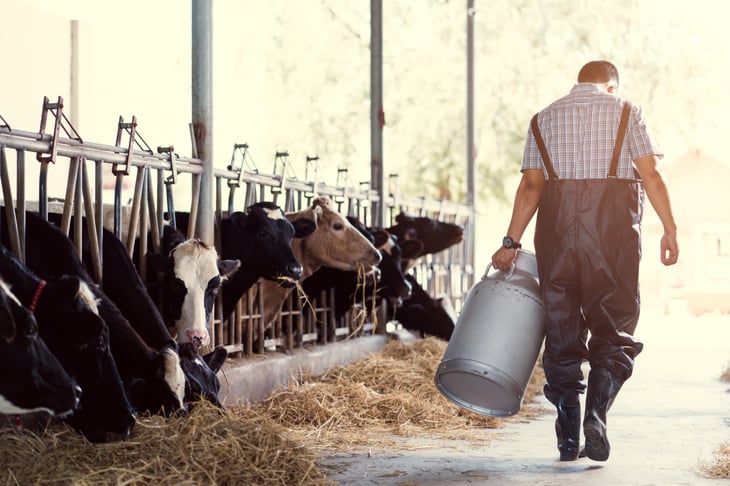
Overall score: 25.47
Wisconsin is ranked last in the Great Lakes region in worker rights and protections. And its minimum wage of $7.25 means a minimum-wage full-time worker earns only 29.9 percent of what it takes for a family of four to live in the state.
37. Florida

Overall score: 27.04
Florida ranks closely to Arkansas in the labor index, coming in at No. 26 for wage policies, No. 35 for worker-protection policies and No. 30 for the right to organize. In the Sunshine State, however, the minimum wage of $8.25 is a dollar above the federal minimum.
36. Utah

Overall score: 28.51
Bordering states can have wildly different ranks. Utah is near the bottom of the list for wage policies, at No. 47, while neighbor Arizona is No. 3.
35. Texas

Overall score: 30.73
Texas has room to improve, but the Lone Star State scores highly in its region for the right to organize, at No. 28. Oxfam notes that the state allows for collective bargaining and wage negotiation for many public sector workers — though not teachers.
34. Wyoming

Overall score: 31.9
Oxfam points out that while Wyoming struggles in the area of worker protection, coming in at No. 35, it could learn lessons from neighboring Colorado. Colorado scores much higher, ranking at No. 14 in worker protection, thanks in part to laws involving pregnant worker accommodations, expansion of the right to pump breast milk in the workplace and pay secrecy.
33. Arkansas

Overall score: 32.16
Although Arkansas raised its minimum wage to $8.50 in 2018 through a previous ballot initiative, it could take a lesson from southeast regional leader West Virginia, which provides worker-protection rights that Arkansas does not.
32. Nevada

Overall score: 33.5
Work in Nevada could be a gamble. The Silver State ranks last in the Far West for worker rights and protections, scoring mid-pack at No. 23. It’s at No. 24 for wage policies and No. 30 for the right to organize.
31. Kentucky

Overall score: 34.27
Kentucky could stand to improve in all areas. It’s No. 32 for wage policies, No. 35 for worker-protection policies and No. 27 for the right to organize. The minimum wage is the federal minimum of $7.25.
30. West Virginia

Overall score: 34.28
West Virginia is ranked first in the Southeast region, but it’s still mid-pack at the national level. Oxfam notes that the state leads the region by ensuring better compensation and conditions in the workplace. Its minimum wage is $8.75, and its highest ranking among the three areas rated is No. 15 for wage policies.
29. South Dakota

Overall score: 35.72
South Dakota ranks close to Missouri, coming in fairly highly for wage policies at No. 13, but ranking No. 35 for worker- protection policies and No. 30 for the right to organize. It could look to neighboring Minnesota for worker protection tips.
28. Missouri

Overall score: 36.73
Missouri and its $7.85 minimum wage fall fairly mid-pack. The Show Me State is No. 29 for wage policies, No. 35 for worker-protection policies and No. 23 for the right to organize.
27. Michigan
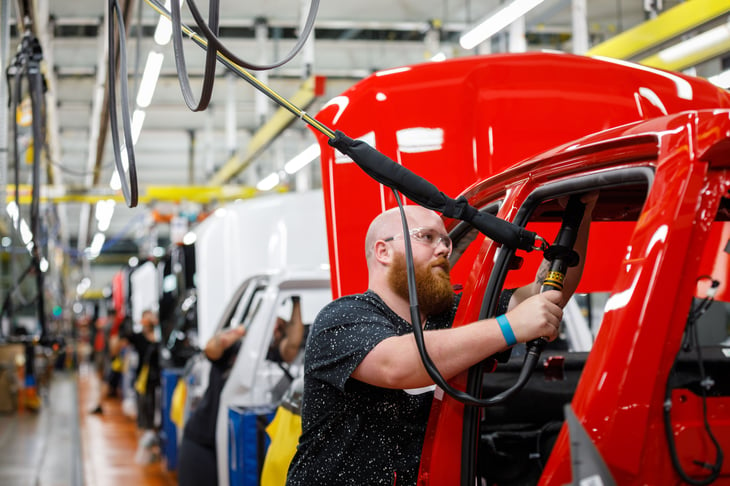
Overall score: 38.9
Michigan scores quite high for wage policies, coming in at No. 12. But it’s lower on the other two rankings, coming in at No. 31 for worker-protection policies and No. 30 for the right to organize. That may surprise some, considering the state is the birthplace of the American labor movement, thanks to its dominant automobile industry.
26. Indiana

Overall score: 38.92
Indiana ranks 31st, close to Michigan, for its wage policies, but better on worker-protection policies (25) and the right to organize (23).
25. Montana

Overall score: 40.2
Montana lands solidly in the middle on all counts. Big Sky Country sits at No. 25 for wage policies, No. 33 for worker-protection policies and No. 23 for the right to organize.
24. Pennsylvania

Overall score: 46.66
Pennsylvania is ranked last in the Mideast region in worker rights and protections, lagging on ensuring better compensation and conditions in the workplace. However, it’s one of the 21 states tied for first in the right-to-organize category.
23. New Hampshire

Overall score: 49.72
Although New Hampshire’s overall ranking is mid-pack at No. 23, it ranks dead last when it comes to wage policies, in part due to its minimum wage, set at $7.25, which is also the federal minimum. But from worst to first — it’s one of the 21 states tied for first when it comes to the right to organize.
22. Arizona

Overall score: 50.61
A minimum wage of $10.50 helps Arizona rank third in the nation for wage policies (next-door neighbor Utah is at No. 47). The desert state doesn’t do as well in other areas, ranking 19th for worker-protection policies and No. 40 for the right to organize.
21. Nebraska

Overall score: 50.8
Nebraska, with its $9-an-hour minimum wage, ranks at No. 18 for wage policies, No. 19 for worker-protection policies and No. 23 for the right to organize.
20. Ohio

Overall score: 54.53
It’s tough to predict future status for a state like Ohio, Oxfam notes, because its minimum wage increases on Jan. 1 of each year by the rate of inflation. Right now it’s at $8.30. The state itself is one of those 21 that top the nation for the right to organize. That’s great — but it comes in at No. 22 for wage policies and No. 35 for worker-protection policies.
19. Hawaii

Overall score: 55.63
Is Hawaii paradise for workers? Not quite. The Aloha State is also tied for No. 1 for the right to organize, but lands at No. 27 for wage policies and at No. 16 for worker-protection policies. The index is moderately correlated with life expectancy as well, meaning states that provide a good labor environment also tend to have long-lived citizens. Hawaii has the nation’s highest life expectancy, at 81.3 years.
18. Alaska
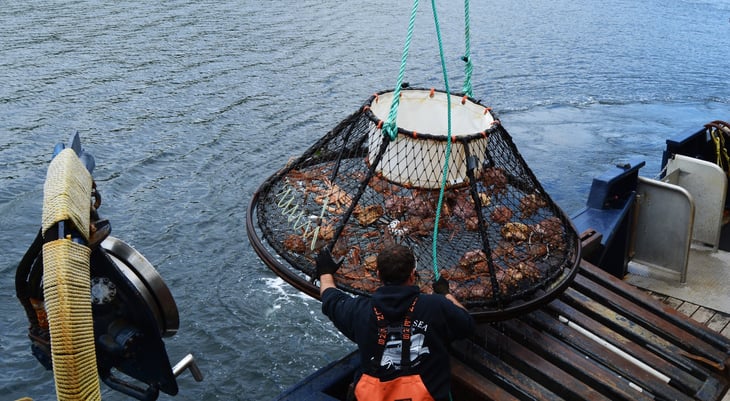
Overall score: 56.54
The only two states not in the contiguous 48 have similar labor-index figures. Alaska comes in just one ranking higher than Hawaii. The Last Frontier is No. 17 for wage policies, No. 35 for worker-protection policies and among the group of 21 states that rank highest for the right to organize.
17. Delaware

Overall score: 57.02
Delaware ranks close to Maryland and New Jersey in the labor index. It sits at No. 23 for wage policies, No. 25 for worker protection policies and is one of the 21 states tied for first place when it comes to the right to organize.
16. New Mexico

Overall score: 57.21
New Mexico leads the Southwest region through greater worker protections and livable wages. It still has a pretty low minimum wage at $7.50 per hour, which is just 29.7 percent of what it takes for a family of four to live in the state.
15. Colorado
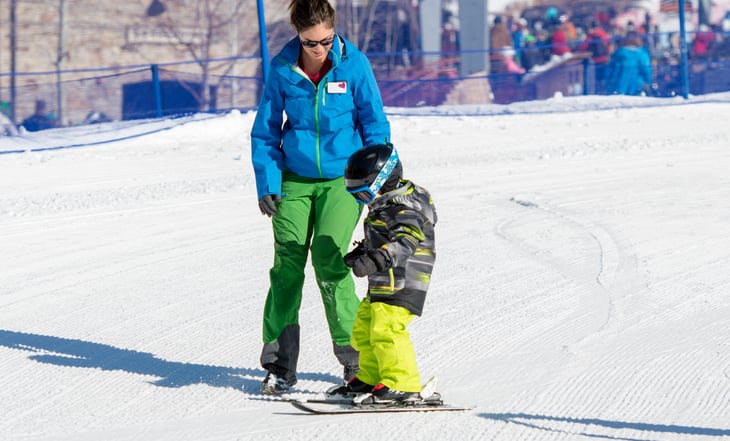
Overall score: 59.5
Colorado is ranked first in the Rocky Mountain region, leading by ensuring better compensation and conditions in the workplace. It’s helped by laws guaranteeing pregnant worker accommodations, expansion of the right to pump breast milk at the workplace and pay secrecy.
14. Illinois

Overall score: 64.14
Illinois is ranked first in the Great Lakes region, and Oxfam notes that it leads its neighbors by ensuring better compensation and conditions in the workplace. It ranks at No. 16 for wage policies, No. 14 for worker-protection policies and among the top states for the right to organize.
13. New Jersey

Overall score: 65.48
New Jersey is moving up, Oxfam points out. It’s made several major advances in labor legislation and regulations in 2018, most notably passing paid sick-leave legislation and one of the most advanced equal pay laws in the country. Without these changes, New Jersey would have been ranked 16th instead of 13th.
12. Maryland

Overall score: 71.63
Maryland is one of those states that shows that physical location on the map can matter very little. It borders the top-ranking District of Columbia, but also touches bottom-ranking Virginia. Oxfam notes that Maryland could take some lessons from D.C. to improve its own worker-protection ranking of No. 11.
11. New York
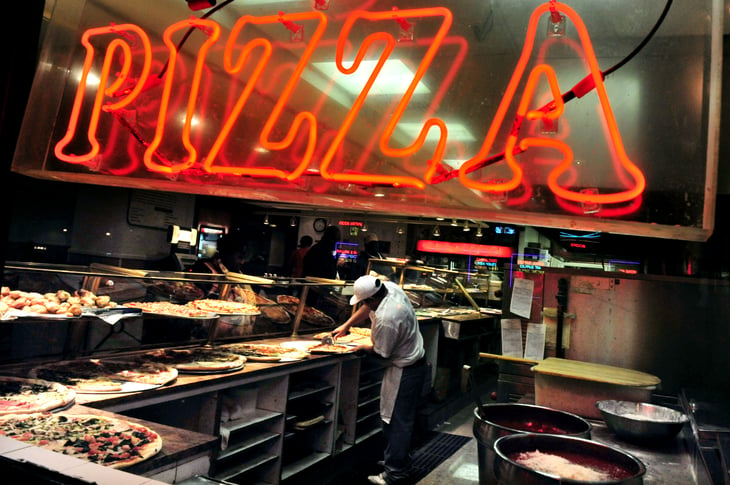
Overall score: 71.72
It’s up to you, New York, New York, Frank Sinatra once sang. The Empire State is doing pretty well, ranking at No. 20 for wage policies and No. 9 for worker-protection policies, and it’s part of that giant 21-state tie for the top when it comes to the right to organize.
10. Minnesota

Overall score: 74.2
The North Star State is tops in the Plains region, landing at No. 5 for wage policies and at No. 13 for worker-protection policies. It’s also one of the 21 states tied for first for the right to organize. Oxfam uses it as an example of how geography does not determine placement: Minnesota is at No. 10 overall, but it shares a long border with Wisconsin, which is low on the list, at No. 38.
9. Connecticut

Overall score: 74.97
Connecticut ranks No. 4 for worker-protection policies and is one of 21 states tied for first when it comes to the right to organize. It has room to improve regarding wage policies, where it lands at No. 19.
8. Maine

Overall score: 75.35
Maine is competitive with many of its neighboring states. But it can be pricier to live in the Pine Tree State than in some others. Oxfam points out that the living wage for a family of four in Maine is $23.24 per hour versus just $20.47 in South Dakota.
7. Rhode Island

Overall score: 78.69
Smallest state Rhode Island scores similarly to its New England neighbors. It’s one of the 21 states tied for tops in the right to organize, and it comes in at No. 11 for wage policies and No. 6 for worker-protection policies.
6. Oregon

Overall score: 78.81
Oregon joins its West Coast neighbors of California and Washington near the top of the list. It’s one of 21 states tied for the No. 1 spot when it comes to the right to organize, and it lands at No. 10 for wage policies and No. 7 for worker-protection policies.
5. Vermont

Overall score: 78.84
Vermont scores similarly to many of its New England neighbor states. But when it comes to worker protection, you’re better off in nearby Massachusetts, which ranks third to Vermont’s seventh place.
4. Massachusetts

Overall score: 82
Massachusetts is ranked first in the New England region, scoring generally high when it comes to other states. It ranked No. 7 for wage policies and No. 3 for worker protection, and it’s part of the 21-state tie for right-to-organize policies.
3. California
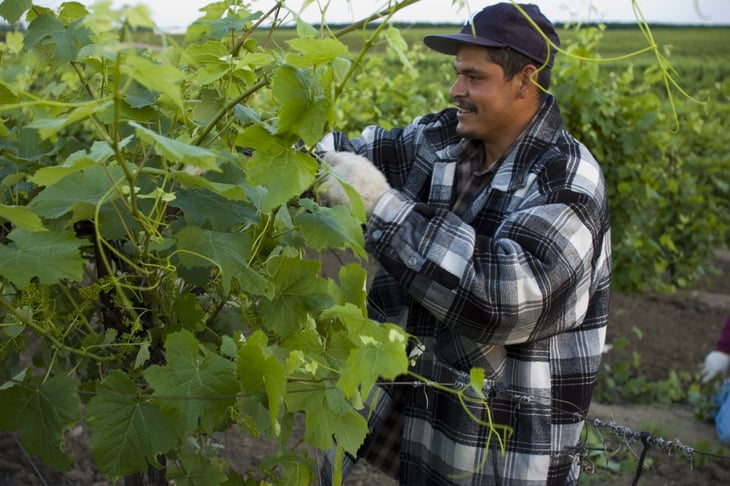
Overall score: 87.64
Sunny California tops the nation for worker-protection conditions and lands in a multistate tie as the best state for the right to organize.
2. Washington

Overall score: 88.43
Washington state’s impressive score is helped by the fact that it topped the list for wage policies and tied for the top spot regarding the right to organize. The home state of Microsoft, Starbucks and Amazon has a minimum wage of $11.50.
1. District of Columbia

Overall score: 95.34
The two Washingtons — the state and D.C. — top the list. In the District of Columbia, a $13.25 minimum wage means that a full-time minimum wage job pays $27,560 annually. But workers in neighboring Virginia have to put in nearly double the hours. There, the same job earns only $7.25 an hour for annual pay of $15,080.
How does your state stack up for worker rights and pay? Share your thoughts in comments below or on our Facebook page.




Add a Comment
Our Policy: We welcome relevant and respectful comments in order to foster healthy and informative discussions. All other comments may be removed. Comments with links are automatically held for moderation.